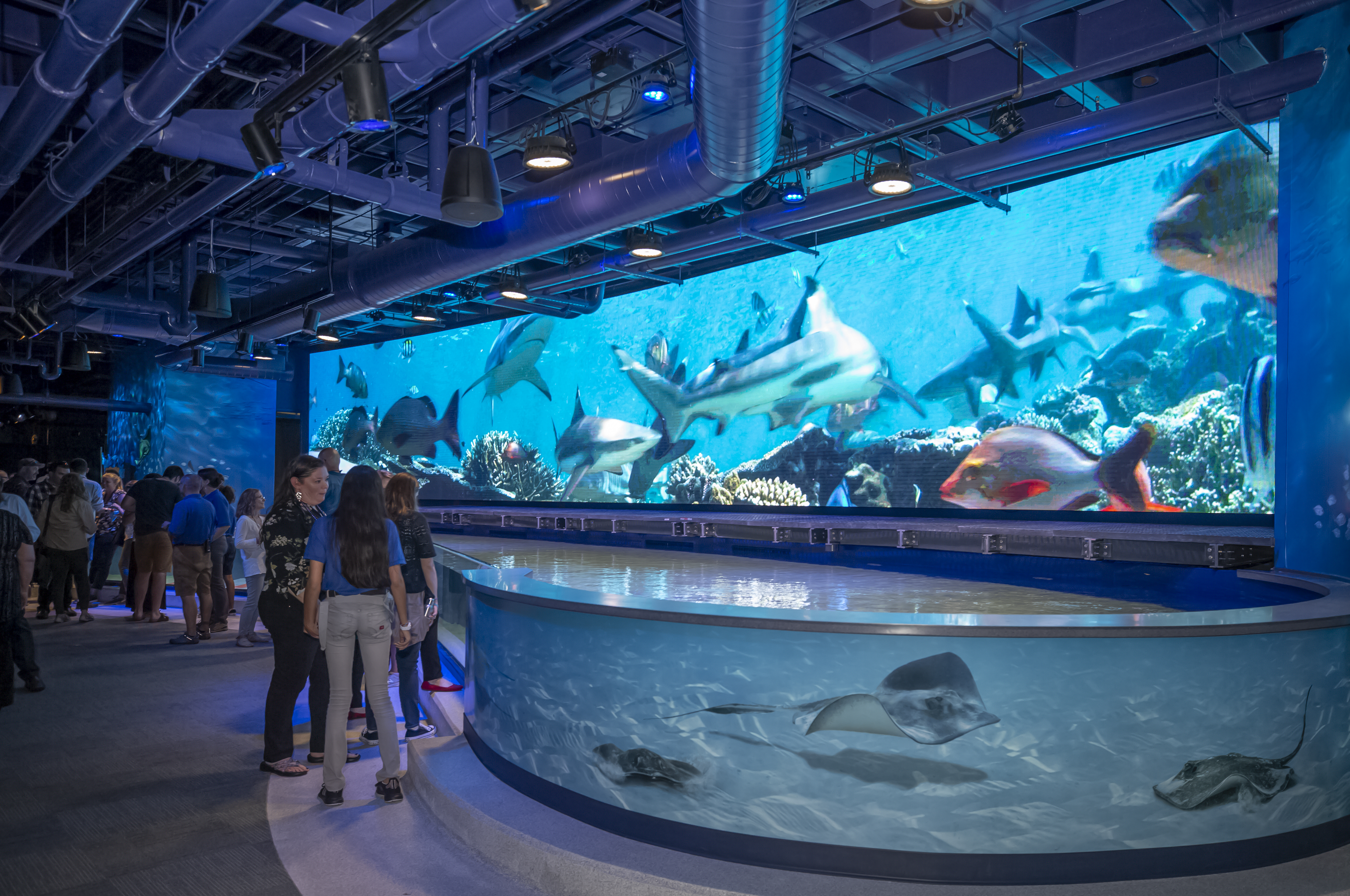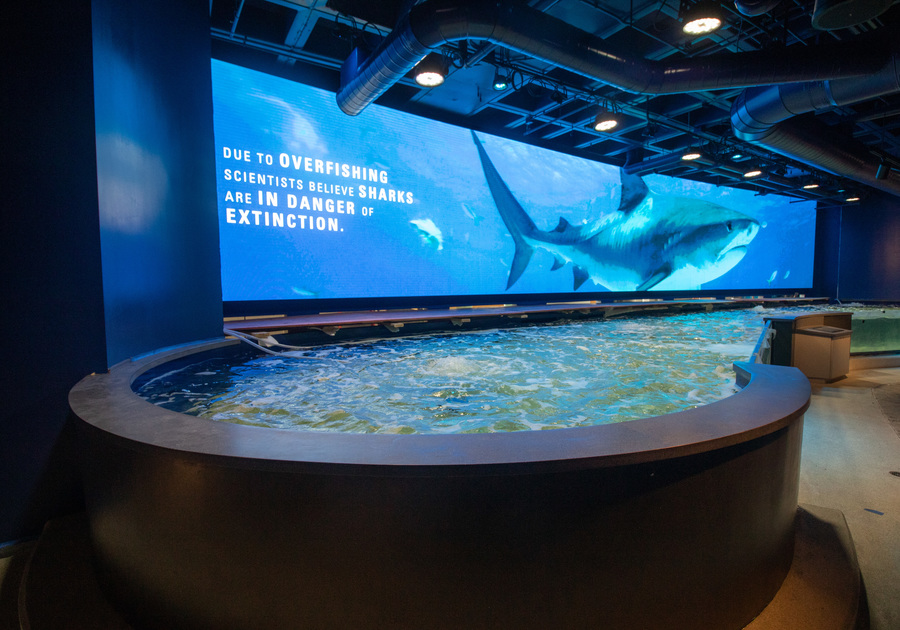Shark Discovery, the new 13,000-gallon shark and ray touchpool, opens at Audubon Aquarium Friday, July 2, 2021.
The new pool measures approximately 60-feet-long by 16-feet at its widest point--six times the size of the previous stingray touchpool at the Aquarium. A massive interactive LED screen running the entire length of the pool features a variety of sharks, rays, and fish to highlight the diversity of the ocean.
The habitat will be home to a number of shark and ray species, including white spotted bamboo shark, epaulette shark, southern stingray, coral cat shark, bullnose ray, blue-spotted stingray, and cownose stingray.
"Sharks play a vital role in top-down maintenance of ocean ecosystems around the world," said Senior Vice President and Managing Director of Audubon Aquarium of the Americas Rich Toth. "Globally, shark and ray species are threatened with extinction largely due to overfishing and other unsustainable human practices."
 |
As a member of the Association of Zoos and Aquariums, Audubon Aquarium has partnered with fellow member organizations to help SAFE (Saving Animals From Extinction). AZA SAFE provides a new approach for collaborative conservation with a Conservation Action Plan that includes specific projects, goals, and actions to address the needs of each species, including sharks and rays.
By fostering a connection to marine life through hands-on interaction with sharks, Audubon hopes to encourage an appreciation for the often misunderstood, but essential, species. The goal of the new experience is help guests realize that sharks have far more to fear from humans than humans do from them.
Shark and Ray Facts:
• Sharks and rays are usually very wary of people and will swim away long before you see them.
• Sharks and rays do not have true bones, they have cartilage instead.
• Cownose rays are named for their distinctly creased head lobes that resemble the nose of a cow.
• Sharks inhabit all the world's oceans, and some can even be found in freshwater rivers and lakes.
• The greatest threat to sharks is HUMANS. Each year, tens of millions of sharks are killed for their fins.
Construction of the $2.9 million habitat spans much of the Aquarium's second floor and is the largest project at the Aquarium since the 2014 opening of the Great Maya Reef. The gallery is located between the penguin and sea otter habitats, across from the seahorse gallery.
Toth added, "Our hope is that by reaching into the touchpool creates a connection, sparking action to protect marine life and the ocean."
Audubon will once again be participating in the Plastic Free Ecochallenge, a month-long effort to shift away from single-use plastic dependency while prioritizing public health and safety as much as possible during this pandemic.
Plastic Free Ecochallenge is a 31-day global challenge to reduce and refuse single-use plastics and help discover, learn, and explore new ways to take care of wildlife and the world. Join Audubon's team: https://plasticfree.ecochallenge.org/teams/plastic-free-nola


